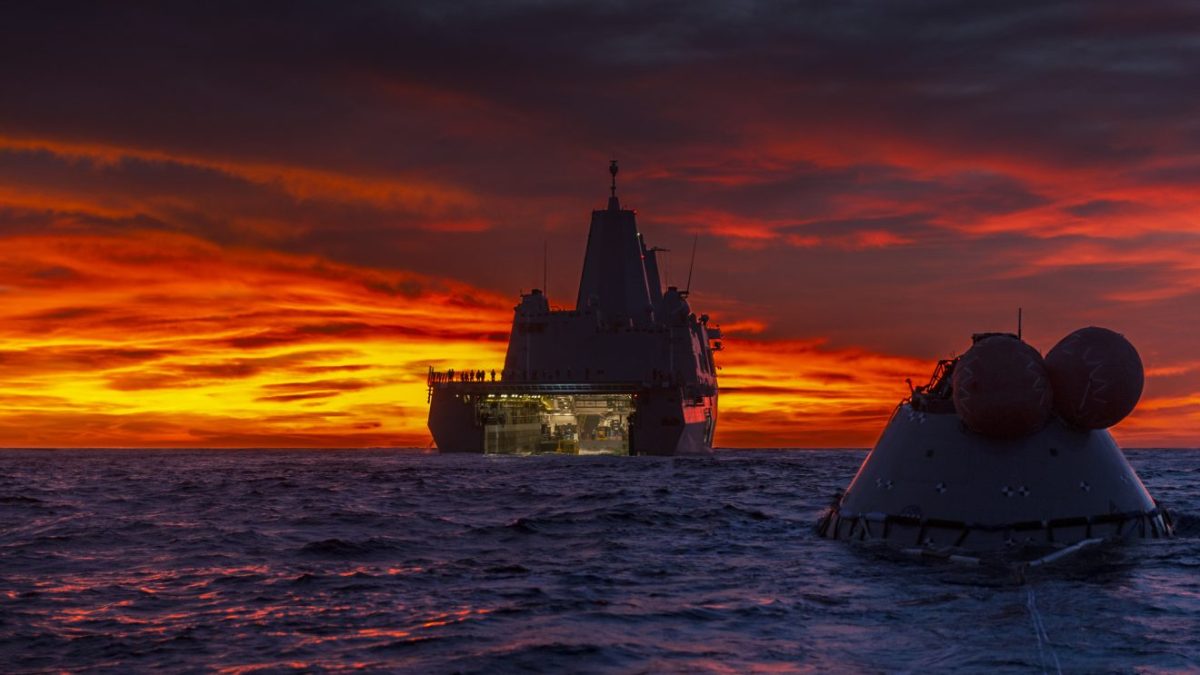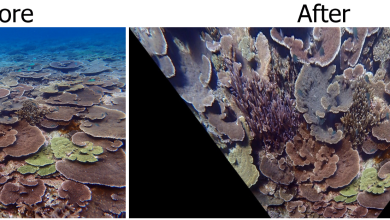When Orion Splashes Down, a Florida Tech Professor Will Be There to Help
When the Orion Crew Module splashes down in the Pacific Ocean Dec. 11 at the end of its 1.3-million-mile Artemis 1 mission, a Florida Tech faculty member will be on the vessel waiting to pick it up.
J. Travis Hunsucker, ocean engineering and marine sciences assistant professor, will provide support for NASA’s Landing and Recovery Team. Through a contract with Jacobs Technology, Hunsucker will utilize his expertise in wave and ship dynamics in the offshore recovery effort near San Diego next month.
With a multi-billion-dollar spacecraft containing cutting-edge (and delicate) technology, how Orion is recovered and secured safely is critical. Part of having that happen successfully involves understanding how the waves are moving on the ocean surface. That can help the retrieval vessel avoid hitting waves in a way that will impact the module.
“You can imagine if you hit a speed bump head-on versus if you hit it at an angle, it’s going to have different excitation,” Hunsucker said. “With the waves in the ocean, they’re not all the same size. Some have different heights and different slopes, so you take all that into account, and then that’s how you give the ship a recommended best heading.”
In the recovery, the ship’s well deck fills with water and the crew module is moved in. Sticking with the automotive analogy, Hunsucker said the set-up is akin to filling up a pickup truck bed with water. There can be lots of water sloshing around, and if there is an object in the truck bed, it could get beat up a little if the sloshing waves are big. The same goes for Orion in the ship’s well deck: once it’s picked up, understanding the waves and how to navigate them will be key to maintaining a secure capsule.
To get the best possible heading for taking on these waves, seven days before the capsule comes back to Earth, Hunsucker will forecast what the ship motions – the forces impacting the ship through six degrees of freedom of movement – are going to be at the time of recovery at various landing locations. He will refine that forecast as the arrival draws closer. Then during the recovery, Hunsucker and the recovery team will give recommended headings to minimize the ship motion.
“We tell the captain or the officer of the deck, ‘If we go at, let’s say, 270 degrees, that will be the heading that will minimize the sloshing or the energy in the well deck, the wave energy in the well deck,’ and that enables us to recover the space capsule more smoothly,” Hunsucker said. “Additionally, starting at seven days prior to landing, we are giving guidance to the landing and recovery director that says, ‘If the spacecraft lands here, we are good. We can recover. We have acceptable ship motions to recover it.’”
Once Orion is inside the ship, the crew on board will perform the recovery tasks, including placing the crew module on its cradle inside the well deck.
Also included in the contract will be design and testing of the Orion Crew Module to be used on subsequent Artemis missions to ensure the astronauts are able to get out safely following open-water landings. Hunsucker and the team are involved in some of the hardware design for the equipment that the rescue team and the divers are going to be using to remove the crew. The hardware is like the floatation collars used in the Apollo missions.
For Hunsucker, it’s been exciting to play a part in what the team is confident will be the safe and successful recovery of Orion.
“I want to emphasize that this has been very much a team effort, and I’m just one person as part of this team,” he said. “There was a tremendous design effort that was done on our hardware that enables us to do what we do, so to work alongside those folks has been a tremendous honor. And seeing how they can design some of this hardware, it’s been very rewarding to work in a team that operates at such a high level.”





